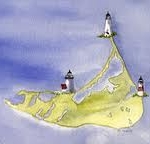CLF vs. EPA: “Whack-a-Mole” Over Cape Cod and Nantucket Nitrogen Pollution, TMDLs, “Point Sources,” and Climate Change.
Robert D. Cox, Jr.
We have been following Conservation Law Foundation and Buzzards Bay Coalition, Inc.’s (“CLF/BBC”) legal challenge to EPA’s approval of Total Maximum Daily Loads (“TMDLs”) in and around Cape Cod pending in the U.S. District Court in Boston. CLF/BBC wants EPA to address increasing nitrogen levels in waters and embayments on Cape Cod and Nantucket. In late August, the court dismissed CLF/BBC’s claims on the ground that CLF/BBC did not have standing to challenge EPA’s approval. Two months later, CLF filed a new action against EPA seeking to over-come the deficiencies of its original claims. While EPA has yet to respond, given EPA’s arguments on “non-point sources” in CLF v. EPA I, CLF’s new challenge to EPA’s approval of the TMDLs should be met with a vigorous defense. Thus, the game of “Whack-a-Mole” between EPA and CLF over nitrogen pollution in Cape Cod and Nantucket waters and embayments, TMDLs, “point sources” and climate change begins.
In CLF v. EPA I, CLF/BBC raised two issues of interest. First, CLF/BBC claimed that EPA’s approval of the TMDLs was arbitrary and capricious because the TMDLs failed to classify septic systems, certain stormwater systems and wastewater treatment facilities as “point sources,” and thereby failed to assign these sources to the Waste Load Allocation (“WLA”) category in the TMDLs. EPA instead classified these sources, as one would expect, as “non-point sources” and assigned them to the Load Allocation (“LA”) category. In so doing, EPA made these non-point sources subject only to discretionary state regulation, rather than subject to NPDES program governing point sources.
Second, CLF/BBC claimed that EPA ignored the effects of climate change when approving the TMDLs. CLF/BBC asked the court to vacate EPA’s approval of the TMDLs and order EPA to allocate these sources to the WLA with an adequate “margin of safety” to address climate issues.
In a decision dated August 29, 2013, the court found CLF/BBC did not have standing to challenge EPA’s approval of the TMDLs. The court first noted that the relief sought by CLF/BBC would not address the alleged injuries. Specifically, the court held that the affidavits submitted by CLF/BBC, by individuals claiming that the impact of nitrogen discharges from septic systems, polluted stormwater runoff and wastewater treatment plants would, if EPA took a more active role in regulating nitrogen pollution, result in improvement in water quality in Cape Cod area waters and their ability to enjoy the water ways, through swimming, sailing, and scallop harvesting, were not expert opinions and did not constitute admissible evidence. Because the plaintiffs conceded that reclassification of sources from non-point sources to point sources would not immediately change the amount of nitrogen authorized to be emitted into the embayments and because CLF/BBC provided no evidence indicating that EPA would not permit the same levels of nitrogen to be emitted into the waters if EPA regulated the sources, the court ruled that the relief sought by CLF/BBC would simply not redress the alleged injuries claimed. Thus, the standard for standing was not met. Claim dismissed.
With respect to CLF/BBC’s climate change claims, the court ruled that the affidavits did not assert any connection between the claimed injuries and EPA’s alleged failure to consider the effects of climate change when approving the TMDLs. Because no information was presented on how CLF/BBC’s interest in Cape Cod waters “will be lessened by” EPA’s alleged failures with respect to climate change, and the court dismissed this claim on the same ground: lack of standing.
While the court knocked-out CLF/BBC’s claims, CLF apparently viewed this dismissal as just another bump in the road. On October 24, 2013, CLF filed a new action against EPA, again seeking to hold EPA accountable for reducing nitrogen pollution in the Cape Cod area waterways. The new Complaint seeks to overcome the evidentiary deficiencies that caused the court to dismiss the prior suit and expands upon its prior climate change claim. CLF again wants to have the TMDLs include septic systems, stormwater systems and wastewater treatment facilities as “point sources” to the WLA with an adequate margin of safety to address climate change concerns. As this action was just filed, EPA has yet to respond. In CLF v. EPA I, EPA moved to dismiss CLF’s claims on the ground, among others, that “states retain primary responsibility for programs designed to reduce pollution from non-point sources . . . [and that] EPA has no authority to enforce requirements of the CWA over non-point sources; that is left to the exclusive province of the states.” Its fair to expect EPA will take the same position in response to CLF’s new claims.
Categorized: Uncategorized



